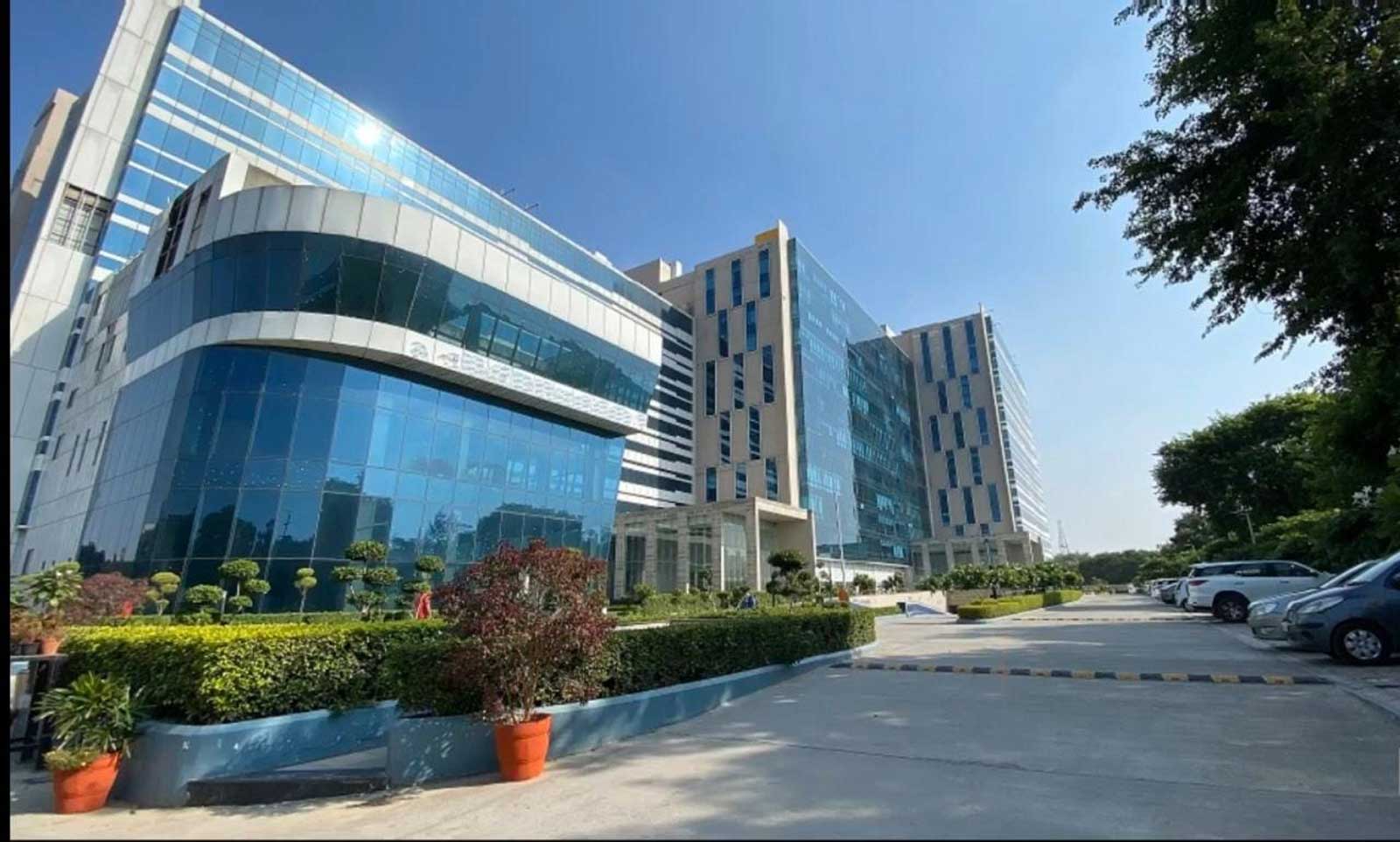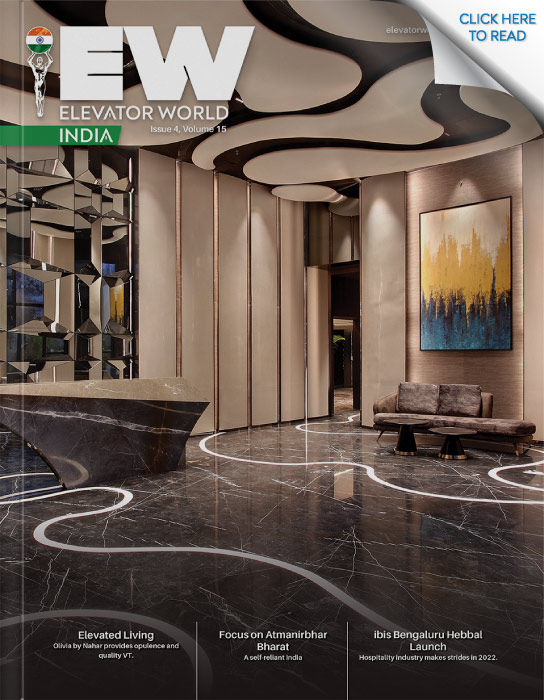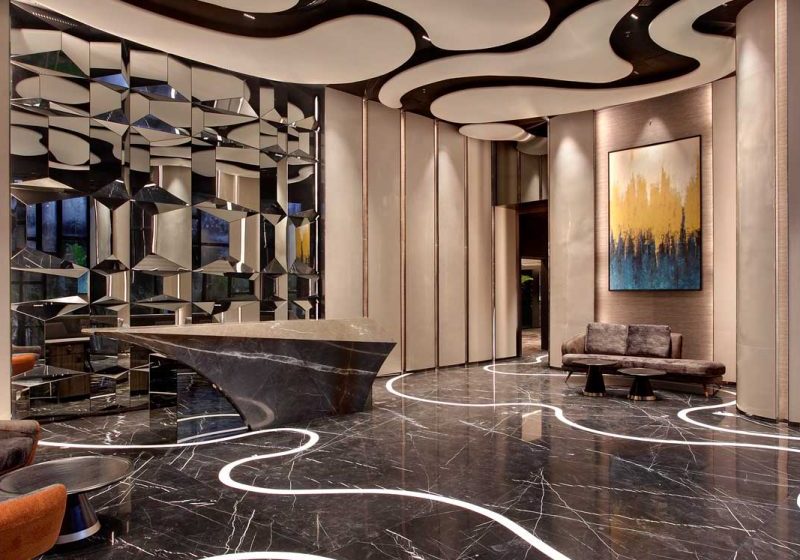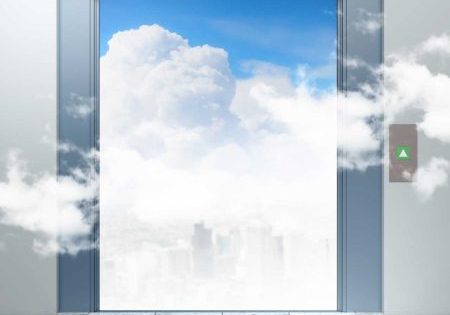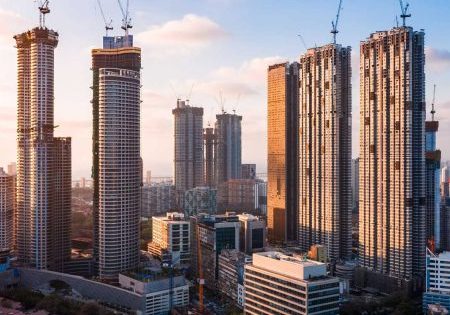Your author shares insights on how growing demand for VT from real estate and infrastructure has led to its importance in the movement toward a self-reliant India.
photos by Gagandeep Kaur
I have been visiting India at frequent intervals during the past couple of decades and the progress in three sectors — real estate, infrastructure and vertical transportation (VT) — has been quite evident. With each voyage, the transformation has been just remarkable. The dynamic, ever-changing nature of the present was akin to a fast-moving travelator taking us from the past to the future.
There was a stage when aspiration-driven Indians would wistfully recall the sleek skyscrapers and rapid transit metro systems on returning from their vacations or career postings abroad. Most memorable incidents would invariably touch upon the experience of gazing at the new surroundings while gliding upwards on the escalators or scaling hitherto unknown heights in high-speed elevators.
It (VT) is indeed the true embodiment of Atmanirbhar Bharat and has elevated its significance in multiple ways.
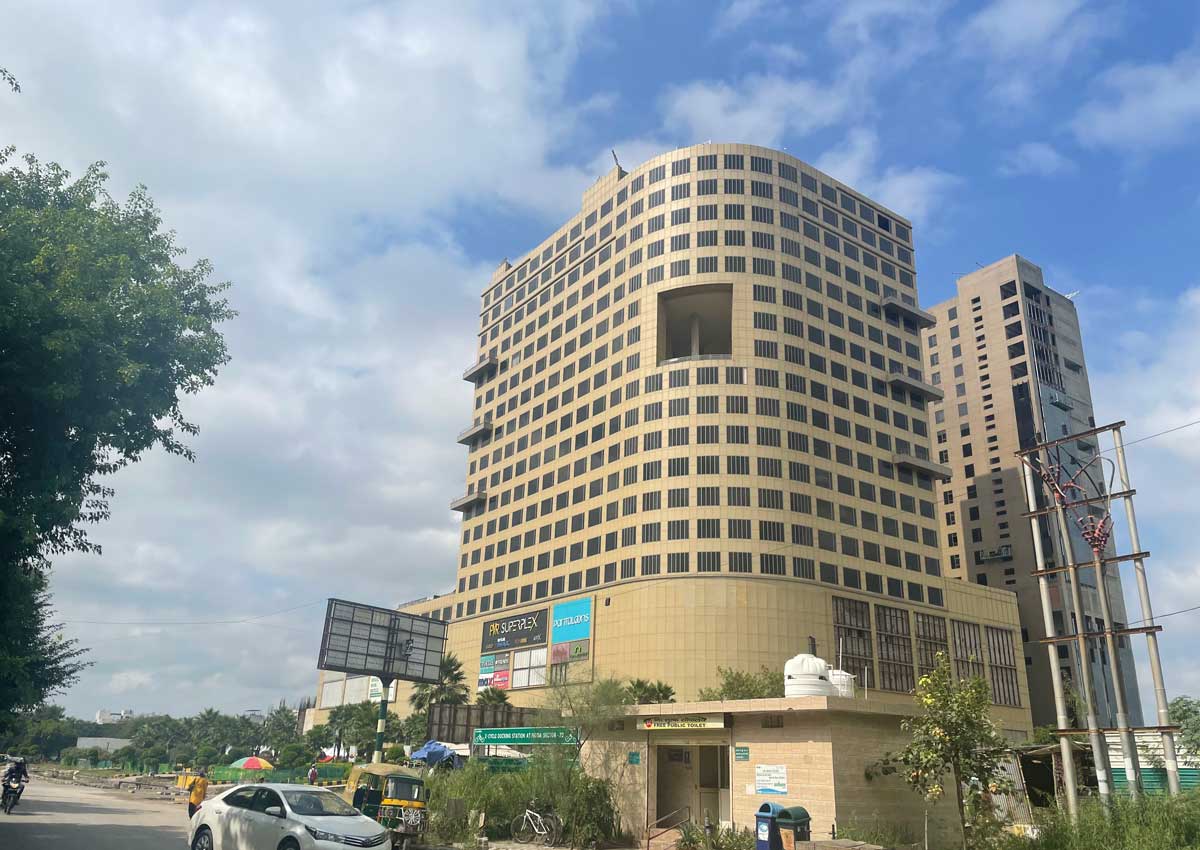
Turning Point
The millennium shift was perhaps the turning point for India in more ways than one. Suddenly, the ratio of high-rise buildings to low-rise structures tilted sharply in favor of the former. From one solitary skyscraper looming above a field of horizontal constructions, it was like a family reunion with almost every new building within the project premises being a sibling of sorts.
The vocabulary expanded, and a new word was almost mandatory in every new launch being announced. Brimming with pride, property buyers described the building housing their new residence as a “tower,” adding that the thrill of literally zooming from the ground floor to the topmost floor ensconced safely in the elevator was the cherry on top of the icing on the cake!
Major Metamorphosis
The metamorphosis was seen across the spectrum. From residential to office spaces, leisure to hospitality, healthcare to academic institutions, suddenly elevators and escalators were all over the place. From a rare luxury reserved for those living at the most premium locations of the major metros, VT in its myriad forms became ubiquitous in real estate Pan-India.
This was what most people refer to as the first phase. The evolution of VT in India continued, scripting newer chapters as high rises grew taller and taller, and the elevators within them witnessed enhanced numbers, capacity and speed, with multiple OEM brands in the fray offering a much wider range of models compared to the earlier scenario.
Greater Focus
The bragging branched out from the basic, “My building has a great elevator,” and reached a different level with people debating the significance of each VT brand and its presence across India. In effect, this proved to be another turning point, as property management services were also making their presence felt. Elevator maintenance became more relevant, almost overnight.
There was almost a similar level of real estate development and VT in the leading cities of India, as well as overseas. The lines began to get blurred as Indians got a feeling of déjà vu when they encountered similar buildings and elevators during visits abroad and vice-versa for those visiting the country. As a result, the comparisons became more focused than ever before.
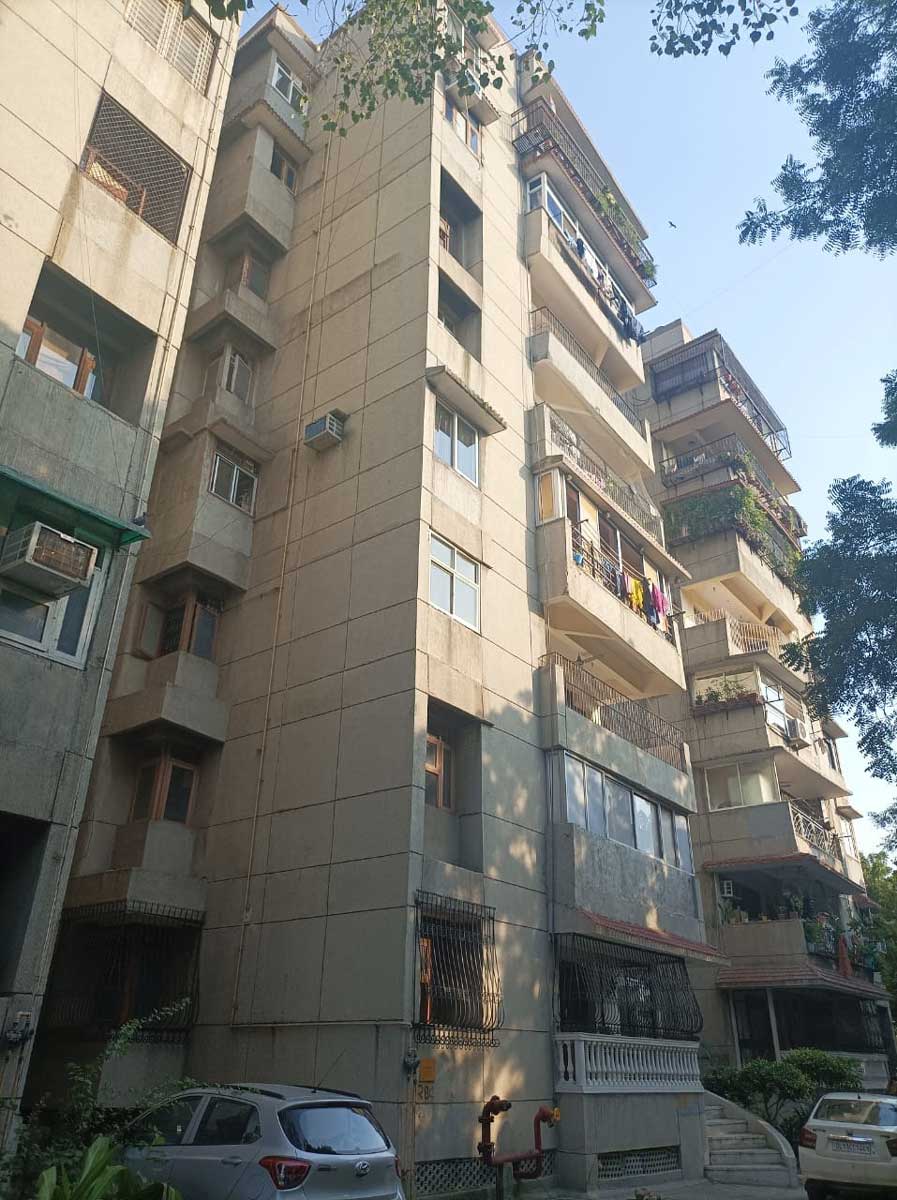
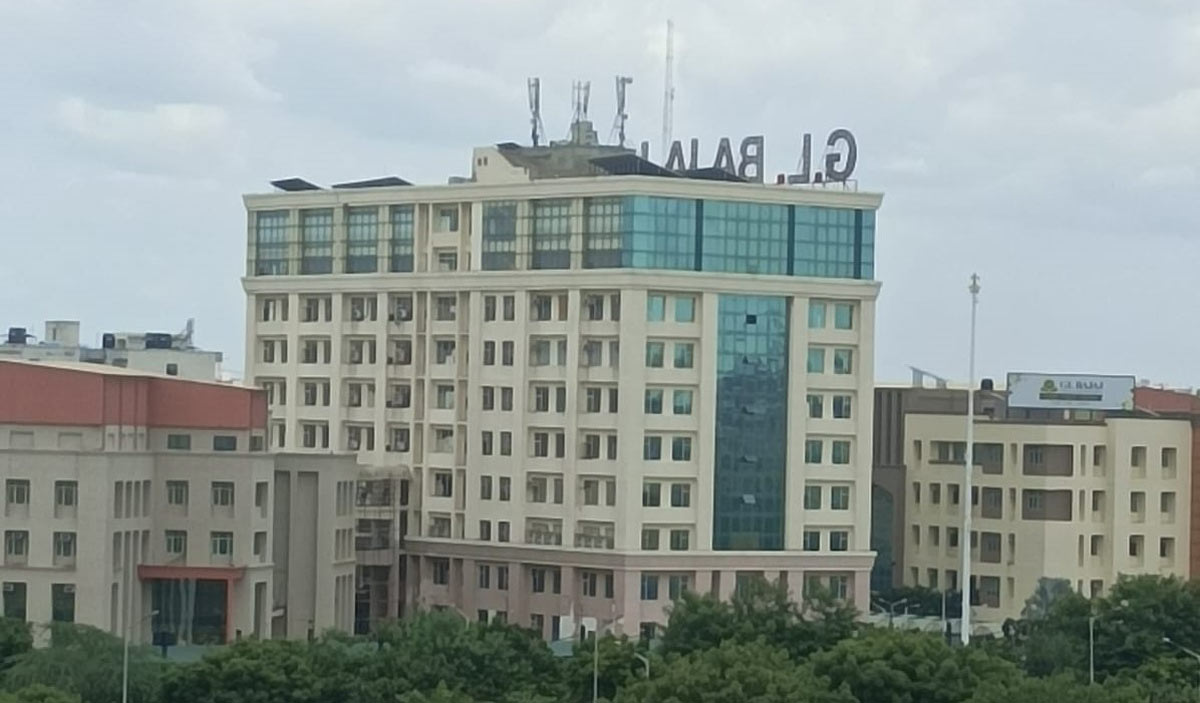
Perception Shapers
With not much discernible difference across countries between the building elevations and elevators within, an equilibrium of sorts was achieved, but not for long. The emphasis on Atmanirbhar Bharat took the concept to an entirely different plane. The high rise towering over you was made in India, but were the key amenities, including VT, also “Made in India?”
From specific manufacturing facilities of leading VT brands to collaborations and tie-ups, the internally — and sometimes also externally — visible amenities of real estate projects (like malls, for instance) were obviously witnessing a sea change in this aspect. When it was opined that perhaps real estate alone would not be able to sustain the demand, another sector joined in as well.
Infrastructure Impetus
While one was accustomed to using elevators, escalators and travelators at airports, it was the lone connectivity-related option for a long time. While you had the metro systems utilizing elevators and escalators, their networks were limited for many years. Suddenly, they, too, witnessed a growth spurt, and you were reading information about new metro lines coming and existing ones being extended.
With additional metro linkages being continuously planned, it became clear that the minor demand driver had suddenly multiplied exponentially. Add to this the decision of incorporating elevators and escalators on existing railway stations while it was made mandatory on the new or redeveloped ones, and infrastructure became a key segment for VT brands.
Niche Segments
Similarly, a hitherto silent segment became highly vocal. Residents of bungalows, row houses and villas, which had been referred to as horizontal development and hardly considered a market category, now insisted upon home elevators being incorporated in existing projects and new ones alike. Penthouse and duplex owners followed suit, insisting upon dedicated internal elevators.
Corporations that planned to take up multiple floors of a particular office building began asking for escalators to be installed between them. Not only did this enable greater efficiency by avoiding queues at the elevators, they also became informal discussion zones for management heads who would tell their team members to “Walk with me” while moving from one floor to another.
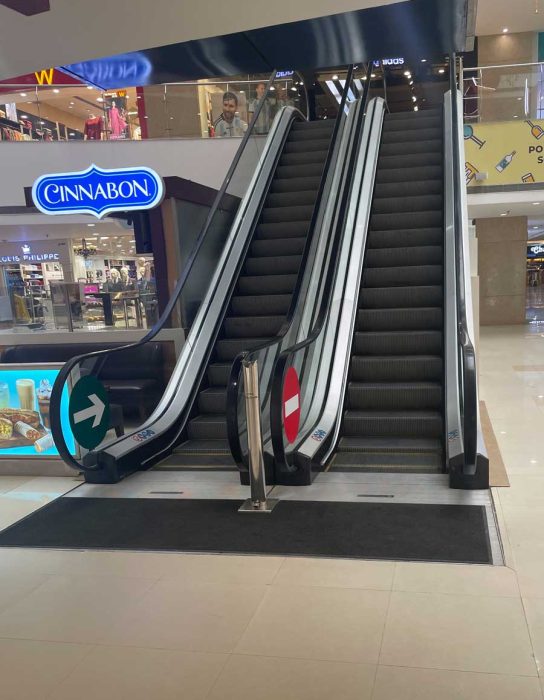
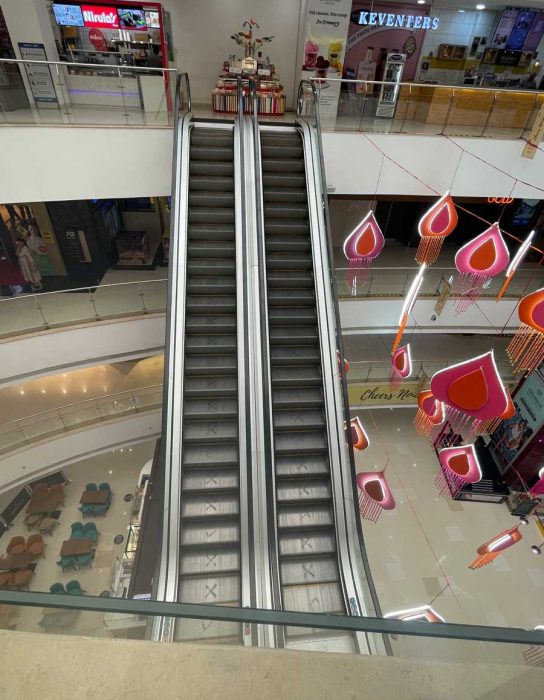
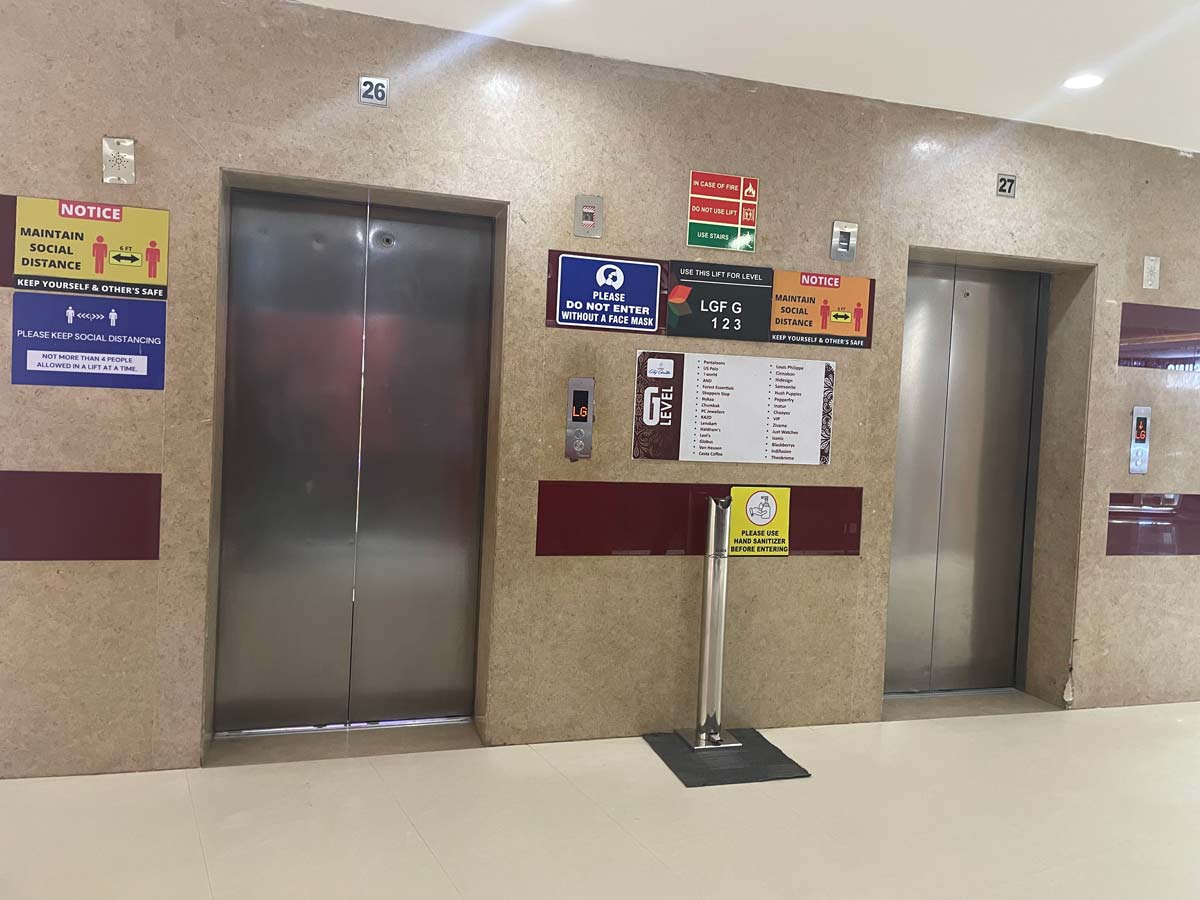
Bottom Line
VT has emerged as an integral part of the activities driving India’s economic growth, be it manufacturing (factories and production units), services (office buildings), shopping and leisure (malls, supermarkets), hospitality (hotels), healthcare (nursing homes and hospitals), education (schools and colleges) or accommodation (residential buildings).
It is indeed the true embodiment of Atmanirbhar Bharat and has elevated its significance in multiple ways. In fact, one may have noticed that among the images of India’s Prime Minister Narendra Modi at many infrastructure unveilings, those where he is on an escalator or in an elevator tend to be highlighted the most as they symbolize the concept of “India Rising.”
Looking Forward
We have been privileged to witness the transformation that has taken place so far and look forward to VT essaying an even greater role in terms of raising the concept of Atmanirbhar Bharat to even higher levels as we move forward!
Get more of Elevator World. Sign up for our free e-newsletter.
